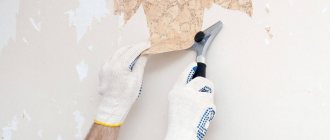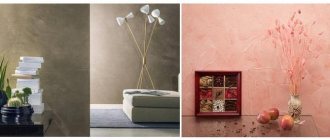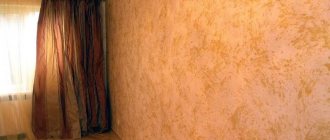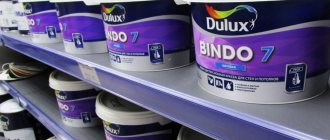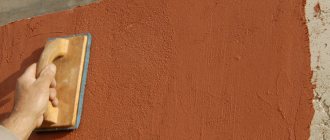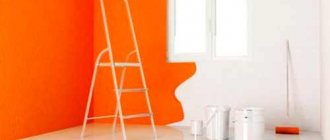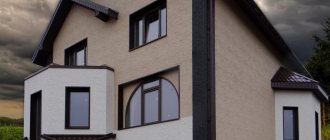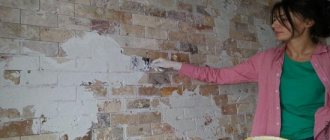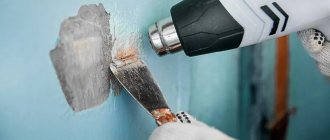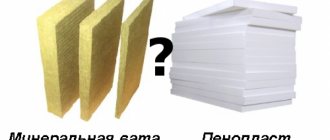Finishing work requires many stages of work; plaster is often applied to the wall in order to obtain a perfectly flat base, ready for any finishing materials. One easy option that will also look good, like other options, is painting over plaster. To get a beautiful finish, you need to carefully choose the paint and varnish. More details about the types of paints and features of the work will be discussed below.
Paint on plaster - why is it needed, features
Painting walls has been a popular finishing option since ancient times. After all, this method is easy to implement and does not require much effort and skills. Coloring agents help to obtain a beautiful coating, which can also create a protective layer from various factors.
The variety of types of paint and varnish products presented makes it possible to find a suitable option without difficulty. But it is important to understand that only a well-leveled base is suitable for applying paint; the plaster layer must be without flaws, otherwise paint for walls under plaster will highlight all the defects.
To choose the appropriate type, you need to consider the following paint requirements:
- Wear-resistant property so that the coating can withstand environmental influences and retain its qualities for a long time;
- Moisture-resistant property is important in rooms with high humidity;
- Long-term preservation of color brightness; the quality of the pigments is important here;
- Safety for human health, no harmful substances should be released;
- Vapor permeable property so that air can freely pass through the coatings, preventing the formation of fungi and mold.
Coloring agents help to obtain a beautiful coating, which can also create a protective layer from various factors.
Caring for Painted Walls
Once the walls are painted, they subsequently need proper care to maintain the properties of the paint. It takes several hours for the surface to dry completely. However, it takes at least 2 weeks for the coating to gain strength and wear resistance. When using a water-based composition, wet cleaning is contraindicated. In this case, the dust is brushed away dry.
Painted surfaces may require maintenance over time
Even novice painters can paint the plaster layer, as the work is not difficult. However, you need to adhere to technology in order to subsequently avoid unwanted nuances. This applies to both external and internal work.
Was this information useful to you? Share in the comments!
Types of paints for plastering work, advantages and disadvantages
Plaster paints for interior work are presented in large quantities on the construction market. But you shouldn’t buy the first one you come across; when choosing, you need to take into account the features of the apartment and the wishes of the residents regarding the external design. Below is a description of the types of paints and varnishes that can be used for indoor painting.
Plaster paints for interior work are presented in large quantities on the construction market.
Water-based paint
Water-based compositions are popular, they are environmentally friendly, so they can be applied indoors without any problems. They create a matte finish, but the color palette is not rich; this shortcoming is corrected by the use of tints; with them you can get any shade.
Can be used on any type of substrate and is easy to apply. However, it does not withstand exposure to humidity, so it is only suitable for dry rooms. To obtain better adhesion, a preliminary stage of priming the walls is carried out.
Can be used on any type of substrate and is easy to apply.
Acrylic washable paint
Acrylic paint for interior plastering work is washable and suitable for rooms with high humidity. The following characteristics characteristic of the composition are distinguished:
- Withstands exposure to moisture, which makes it possible to wash the surface with damp cloths; this process will not reduce the brightness of the color;
- It is possible to add colors to get the desired shade. This allows you to implement any design solutions;
- Creates a matte finish;
- Strength properties are high;
- Ease of operation;
- Long lasting result;
- High elasticity rates.
When carrying out work, you must make sure that the walls are completely dry, the acrylic base does not release moisture.
Acrylic paint for interior plastering work is washable and suitable for rooms with high humidity.
Silicate paint
Silicate paint plaster is created using liquid glass, pigments and fillers. If painting was carried out according to the work rules, then such a coating will last 10-15 years. It has vapor-permeable properties and has a good degree of resistance to ultraviolet radiation. Mold and mildew will not form on the wall.
However, there are also disadvantages to the product. One of them is low elasticity, which can lead to cracks on the surface. Does not fit under any foundation, does not combine with organic elements. High temperatures can lead to deformation of the layer.
It has vapor-permeable properties and has a good degree of resistance to ultraviolet radiation.
Silicone paint
Silicone paint is based on silicone resins. They help create a porous texture on the surface, unlike other types that create a film. This allows you to obtain a vapor-permeable effect, protecting against biological formations.
Despite the vapor permeability, a moisture-resistant coating is created that can be washed if necessary. The surface does not attract dust, which is certainly a plus. Painting the plaster makes it possible to cover existing defects up to 2 millimeters. It stands out for its high level of adhesion. However, the price of the products is high.
The surface does not attract dust, which is certainly a plus.
Alkyd and oil paints
These types create a durable and wear-resistant coating that is resistant to mechanical stress. They can be washed, the colors are bright, but the color palette is not large. They last a long time and can be used in rooms with high humidity. Get a glossy effect on the walls. However, they have an unpleasant odor when applied, the material consumption is high, and they are easy to ignite.
These types create a durable and wear-resistant coating that is resistant to mechanical stress.
Subtleties of choosing products for interior work
When choosing a paint and varnish material, it is necessary to take into account the purpose of the room. This parameter should be the key when choosing.
For the corridor and kitchen, moisture-resistant properties, the ability to wash the surface, and resistance to various mechanical influences are important.
For the corridor and kitchen, moisture-resistant property is important.
For a child's room, the main thing is the environmental component; the ability to wash the walls also does not hurt, because children often dirty various surfaces. The vapor-permeable effect is necessary for the bedroom and nursery; it helps create good microclimatic conditions.
For children, the main thing is the environmental component.
The ceiling covering requires low dust attraction and washability.
The ceiling covering requires low dust attraction and washability.
When plastering work has not yet been carried out, you can think about choosing the plaster itself. For example, there is decorative plaster and decorative paint on sale; it makes it possible to get a textured coating that will look original and decorate the interior of the room.
Decorative plaster makes it possible to obtain a textured coating that will look original and decorate the interior of the room.
Choosing a dye
In some cases, it is more advisable not to paint the plastered surface, but to apply decorative plaster with an already selected shade. To do this, pigment dye is added directly to the plaster mixture.
The color pigment is added separately to the plaster dye.
Tinting must be done on the entire composition at once - otherwise it will be difficult to select the same shade for re-preparing the composition. For example, for cement plaster you can use any concrete dye, but for a polymer mixture it is recommended to use an acrylic-based color.
A simple way is to add a universal dye to the plaster mixture.
When purchasing dyes for plaster, it is recommended to pay attention to the packaging labeling, which will indicate what kind of work the color is intended for (interior or exterior decoration), what type of plaster (for concrete, polymer, gypsum, cement).
Pay attention to: Criteria for choosing paint for the facade, preparing the outer wall for painting and caring for the surface
Painting technique for different types of surface
The most common types of products that are used to plaster walls are cement and gypsum, they can be of mixed types. To obtain the desired result after painting the surface, you should adhere to the following stages of work:
- They begin by assessing the condition of the surface; if necessary, the surface is cleaned, existing defects are removed, and putty can be applied. The cleanliness of the wall is important, because any unnecessary details will be visible through the painted coating;
- Dust is removed with a brush or roller, then the surface is primed; this stage will help reduce the consumption of the coloring agent and also increase adhesion;
- Tools for applying paint can be brushes, rollers or a spray gun. The choice should be made based on the experience of the master, his preferences and the type of paint; not everyone can be used with a spray gun. The data can be found in the manufacturer's instructions. Usually, hard-to-reach places and corners are treated with brushes, and a roller is used to work on the rest of the wall;
- Based on the type of paint, it is prepared for use. Some types are diluted with solvents to obtain the required density. If a basic white color is purchased, then the color is first added, it must be introduced gradually, checking what color is obtained, you can test in an inconspicuous place to make sure that the required shade has been obtained. All breeding is carried out strictly according to the manufacturer’s recommendations;
- When working with a roller, movements are made from top to bottom. Usually 2-3 layers are required, each of which must dry before applying the next. The spray gun must be located at a certain distance from the wall, usually 20-30 centimeters. It is also recommended, if you have no experience, to test its operation on an inconspicuous section of the wall.
Objects in the room and floors are covered with plastic film so as not to be painted.
Usually 2-3 layers are required, each of which must dry before applying the next.
How to calculate consumption
The first step when calculating the area of a room is to multiply the measured lengths and heights of each wall, they add up. Then they find out the areas of windows and doors in the same way. This figure will need to be subtracted from the area of the room if they were taken into account in it.
The average consumption of each product may differ, so you need to find out it, it is always written on the packaging. This figure is multiplied with the area of the room. As a result, they get a figure in kilograms for how much paint is needed for painting.
However, the average does not take into account some factors; it is calculated for ideal conditions. They involve priming the surface; the plaster itself requires a larger amount of solution, and its permeability is higher. Therefore, it is recommended to carry out preliminary priming before painting.
Also, when calculating, you need to take into account the number of layers; each new layer usually requires less paint.
The first step when calculating the area of a room is to multiply the measured lengths and heights of each wall, they add up.
Painting plaster can be a great wall finishing option that is vibrant and aesthetically pleasing. There are many types of paint and varnish products for interior work; when choosing, it is important to focus on the type of room you are going to paint. The article described in detail the available types of products, this should help determine the appropriate option for finishing a particular room. The work itself is not difficult, it is important to properly prepare the surface, because the paint highlights any imperfections.

